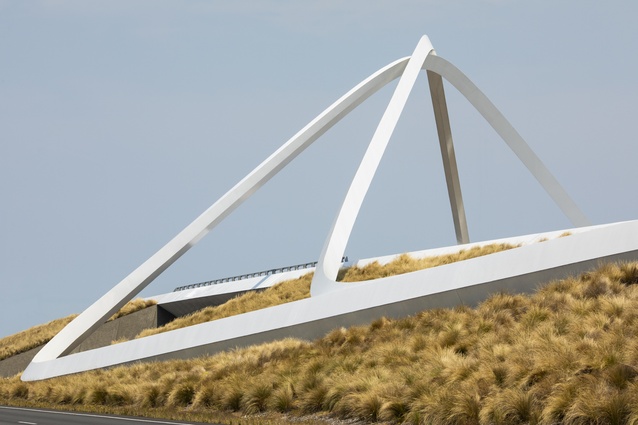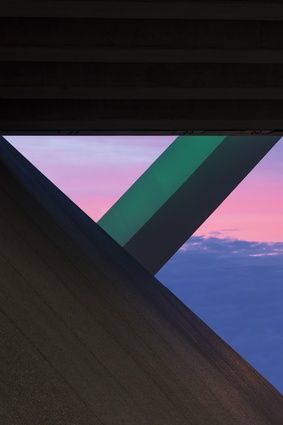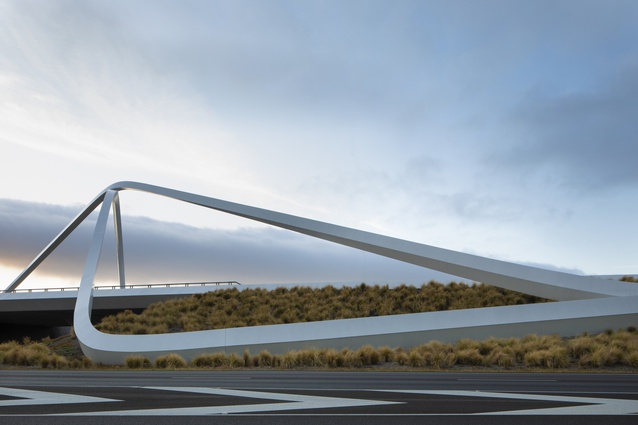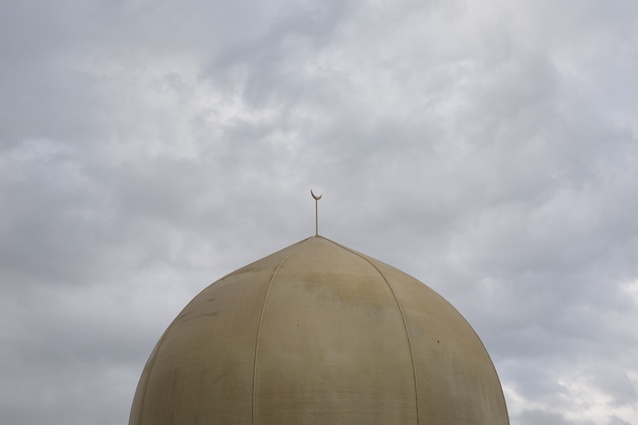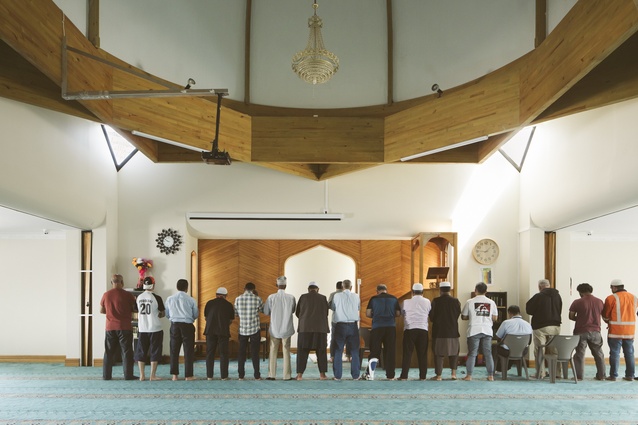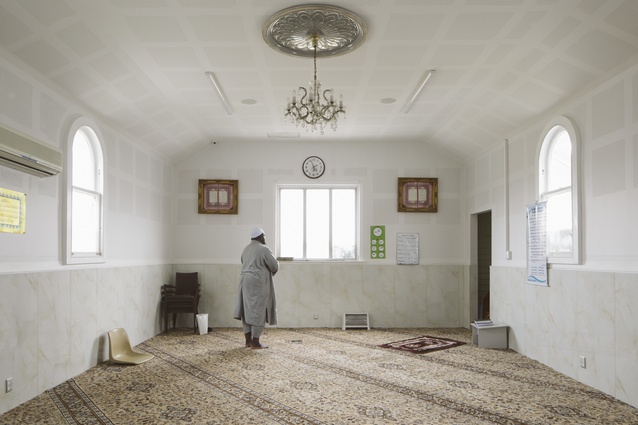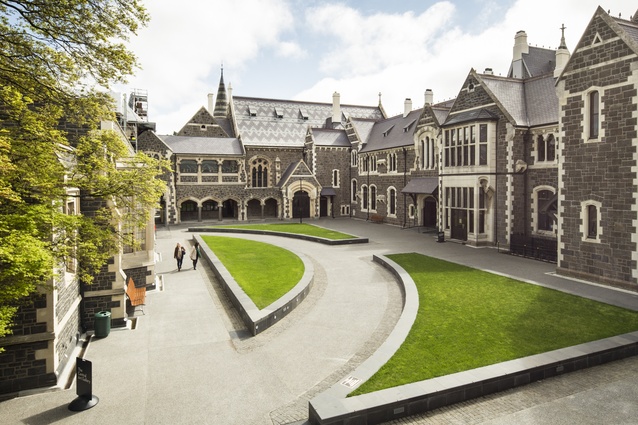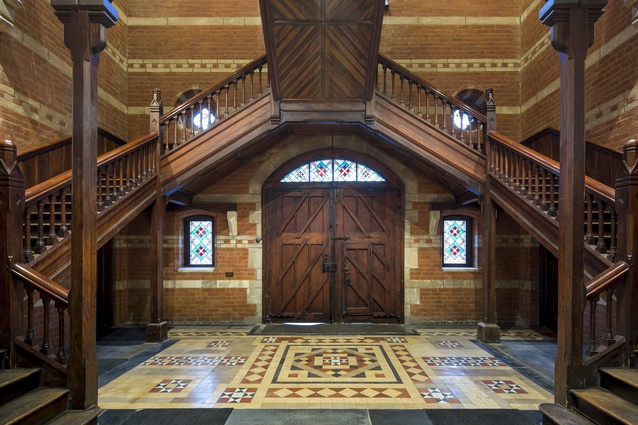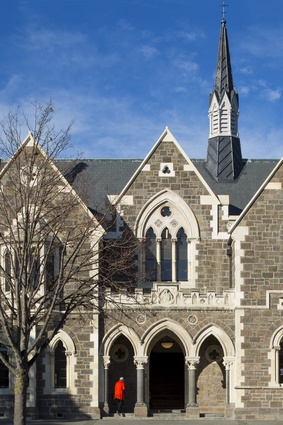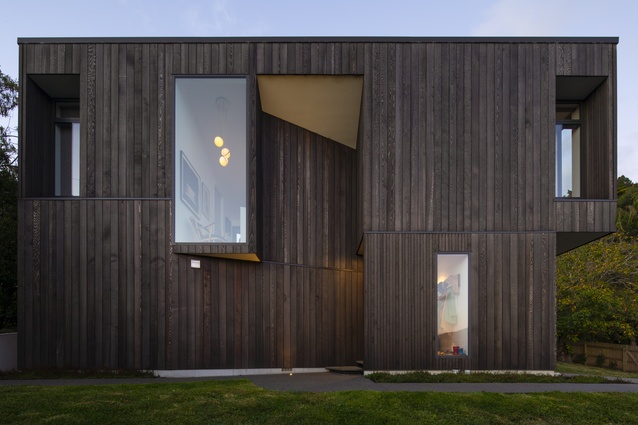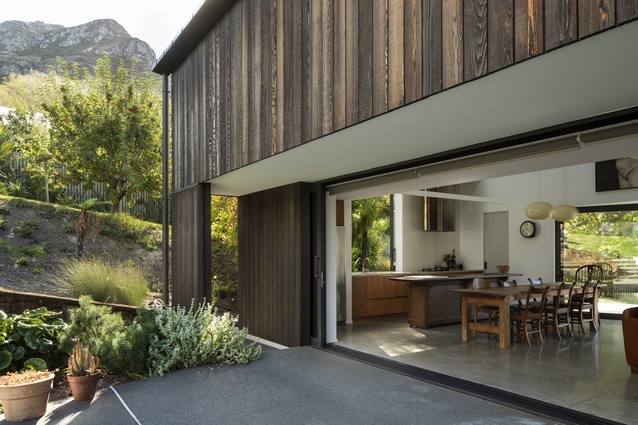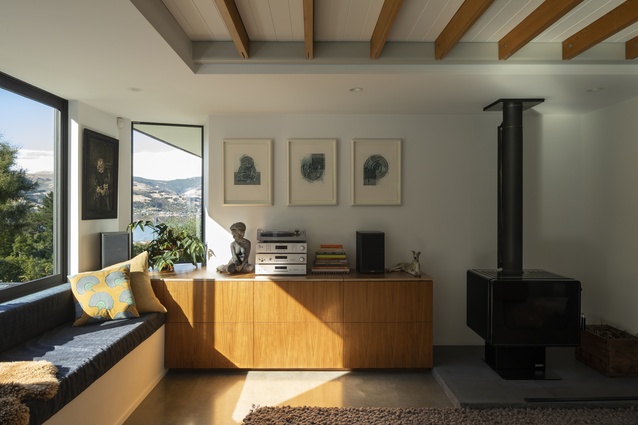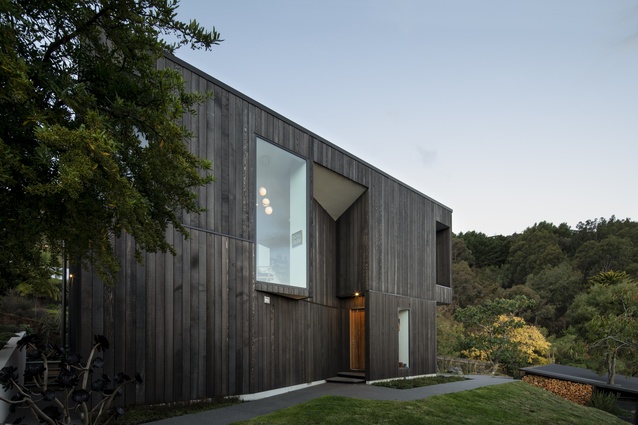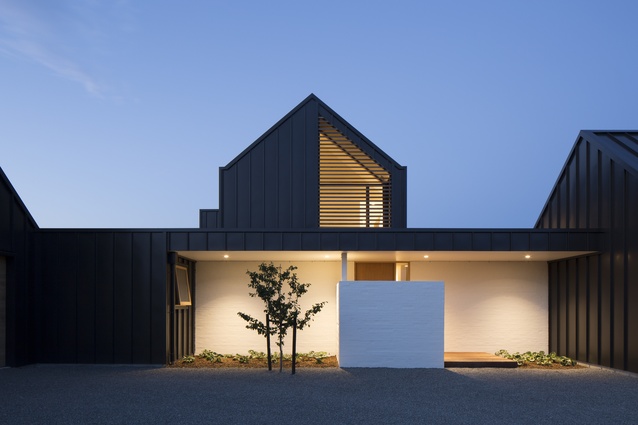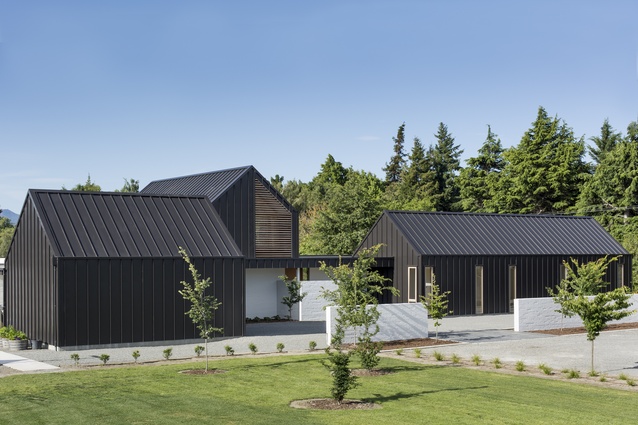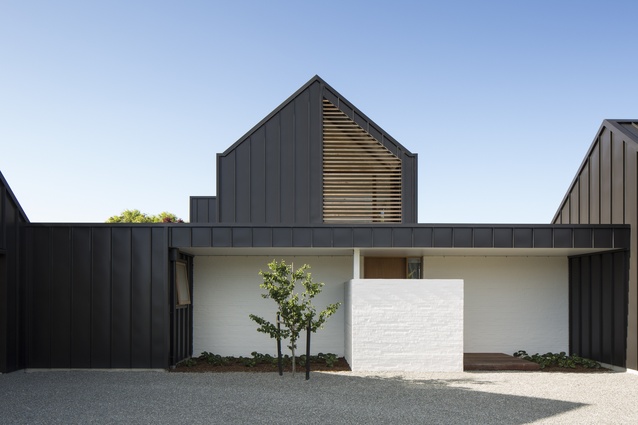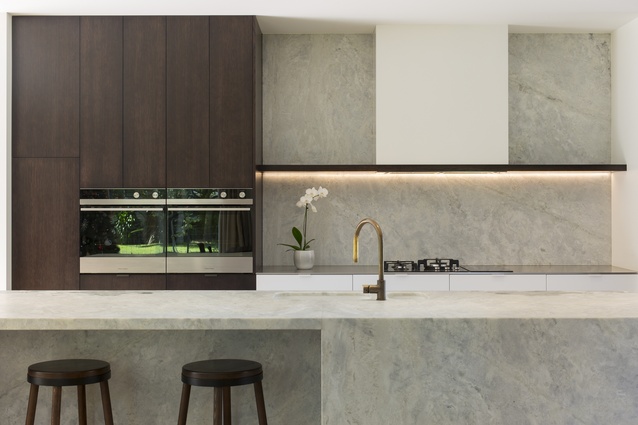Viewfinder: Top five with Sarah Rowlands
South Island-based photographer Sarah Rowlands captures everything from changing landscapes to interesting people. But here, she chronicles her favourite architectural projects to date. Rowlands’ top five is balanced: infrastructure projects, religious spaces, single dwellings. She doesn’t paint herself into a corner.
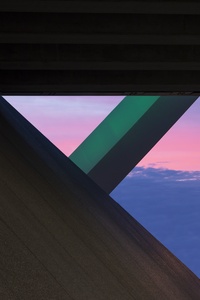
The first on her list (in no particular order) is the Memorial Gateway Bridge by Warren and Mahoney. “I’ve photographed this structure during construction to completion and then revisited it again a couple of years later on the longest day of the year in December 2019, which was as a personal project,” she says.
“I like bridges and admiring how they span a gap. This one in particular is dynamic in shape, changing as you move. It looks completely different in different light conditions as well – that’s why I chose to shoot it on the summer solstice to see it with as much light as possible. It feels optimistic and, as part of a city that’s rebuilding, that’s important. Whenever I drive under it, I can’t take my eyes off it; a lot of people have said that about this bridge.”
The next in the selection are images of both Al Noor Mosque and Linwood Islamic Centre, the sites of the March 2015 Christchurch Terror Attacks where 51 people lost their lives. Rowlands notes that she has a deep interest in religious buildings of all faiths. “I’ve been photographing churches in my spare time around the Canterbury region for a few years: broken ones from the earthquakes, patched up ones from insurance payouts and brand new ones when the old ones can’t be saved.” When she got the opportunity to photograph these Christchurch mosques, she says “it was very special and humbling to be allowed to do this”.
“Both buildings are beautiful and practical in their own ways, and the spaces felt very sacred. It was a privilege to be in a mosque and learn a little about how these buildings are used and how the rituals that occur differ from, say, an Anglican Church. For example, I learned about Salah (prayer) times, ablutions required before prayer, how the linear designs on the carpets line up to face Mecca and even about the segregation of men and woman. The people I met there were wonderful, resilient and welcoming.”
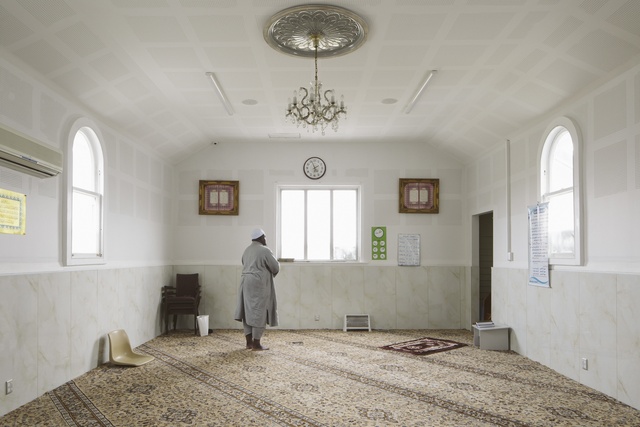
The Arts Centre of Christchurch was damaged in the earthquakes like so many other buildings, and Rowlands has been involved in photographing its rebuild for Warren and Mahoney since 2016. “I’ve always loved going to the Arts Centre from when I was young,” she says. “The newly restored buildings are impeccable. The way the light falls in the quads and on the stonework seems timeless. Inside, the rooms are atmospheric and smell lovely from the wood. We’re so lucky in Christchurch that these buildings are being restored.”
A couple of residential projects round out Rowlands’ picks. Of the Lyttelton House by Objects Ltd, she says, “I shot this house late this summer, and it was one of those places you walk into that looks and feels wonderfully great straight away. Beautiful light, interesting materials and textures. The windows frame considered views of the trees on the hillside and Lyttelton Harbour. It’s partly embedded in the ground and sits ups high on the other side. The scale feels really liveable. So many houses feel like you could get lost in them – not this one.
“Nic Curragh’s (the brilliant architect) craftsmanship with the refined metalwork and timber throughout is very clever. There was a big storm while shooting there and seeing it sweep over Lyttleton Harbour was thrilling. It felt like a safe haven inside, which is how you want a house to feel.”
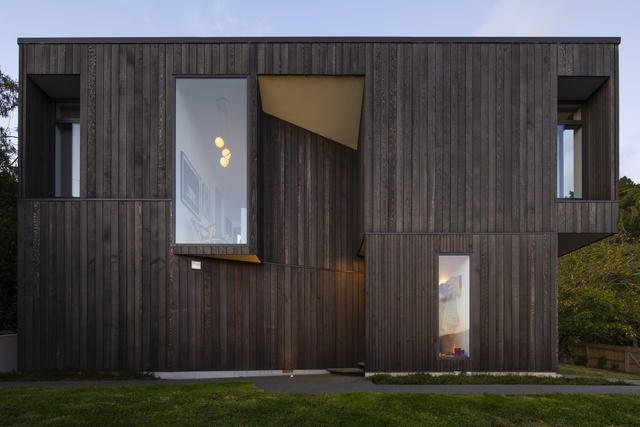
Finally, we come to Ryan House by Arthouse Architects. “I photographed this house a couple of years ago on a searing hot midsummer day with no clouds, and still remember going in the driveway and actually exhaling, because it was so good,” Rowlands says. “The really simple forms of the dark gable rooflines with white bagged brick is very satisfying. The house interior was just as good too, very refined (not easy, I imagine, for a family with young kids) and one of the most elegant kitchens I’ve shot with lovely materials and restrained colour.”
Christchurch certainly presents an interesting backdrop for architectural imagery, undergoing such immense change over the last decade. Rowlands left in 1999 and returned in 2016. “A lot had changed. It had fallen down, and the rebuild was well underway, albeit slowly in parts.”
It’s picking up speed now. “There has been a big surge recently of buildings completing and the cityscape changing,” she says. “There are new lanes and city blocks; old roads have been swallowed up by new buildings; there’s a different scale and skyline (if you can call a 7-storey height limit a skyline). It’s overall very positive. It’s a great city.”
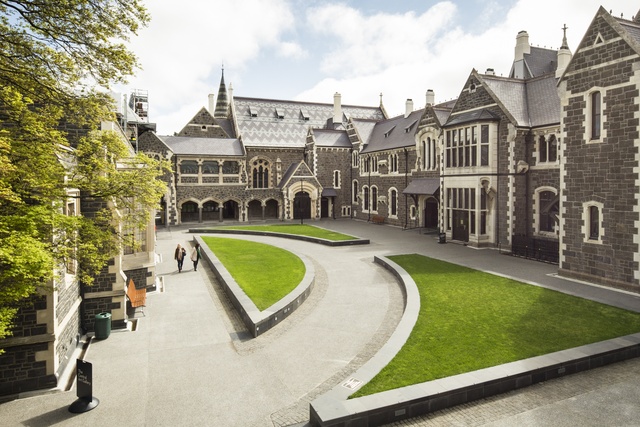
A word of warning though: “We do need to keep working hard to protect our heritage buildings. That’s vital and gives the city dimension.” Practising what she preaches, Rowlands’ catalogue is swathed in heritage buildings, undertaking the important conservation work of documentation. The fundamentals of capturing buildings like these are the same as newer builds, she notes, but perhaps the process is elongated. “I can’t help but slow down in a heritage building. I just like to soak it up, and hopefully, that comes out in the imagery.”
Rowlands is naturally fascinated by space and the way we occupy buildings. It is the feeling of the space that she is after. “Attempting to capture that is compelling to me,” she says. But, how does one capture the feeling of a space as opposed to capturing the feeling of a person, for example? “Architectural [photography] is an assimilation of a number of factors for me. It’s the light, composition and purpose of the image that I’ll consider when taking a photo. I’ve been photographing commercially since the early 2000’s so that feels intuitive now.
“It can also be a bit like a sketchbook – refining a view, maybe a few different takes before getting to the right place imagery wise. Sometimes it is very slow, waiting for the sun to come through a break in the clouds, but there’s a moment when it all comes together.”
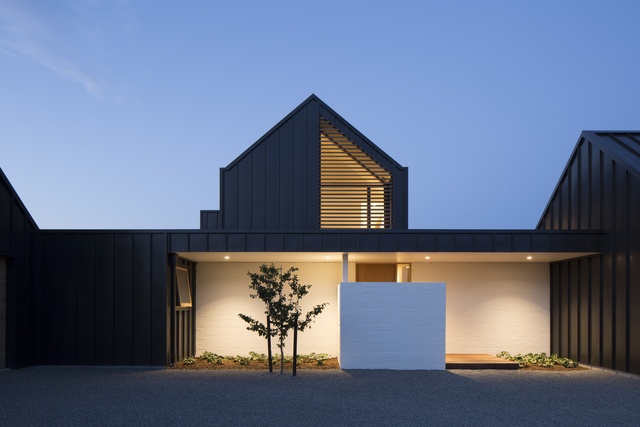
She takes a similar view of time when photographing a human subject, she says, using precious moments to talk with a person before getting behind the lens. “Once I spent two hours in conversation with someone. I almost forgot to take the pictures needed for the magazine. They turned out great, though; we had mutual trust by then.”
A portrait is “a purely emotional interaction and so fleeting because a person isn’t static like a building”, Rowlands says. “But, there is a lovely point where these two fields meet. I consider people in my architectural work to be very important, whether they are in public walking past or we have some models or volunteers in the shoot. People can help make an architectural image relatable in scale, purpose, mood, et cetera.
“Similarly with portrait work, I’ll be drawn to composing the portrait in the setting we’re in and will use architectural elements to compose them in it. I love a good doorframe or window.”
She doesn’t really have a secret to creating the perfect image of a space, she reports. She likes to spend time with the architect, understanding what they’re proud of and the views and moments that stand out to them. “Once I’m left to do my work, it’s a process of refining what they’ve shown me and finding what I like personally.”
But, there is maybe one little secret that she let slip out: “Being in the right place at the right time, according to the light.”
See more at sarahrowlands.co.nz.

